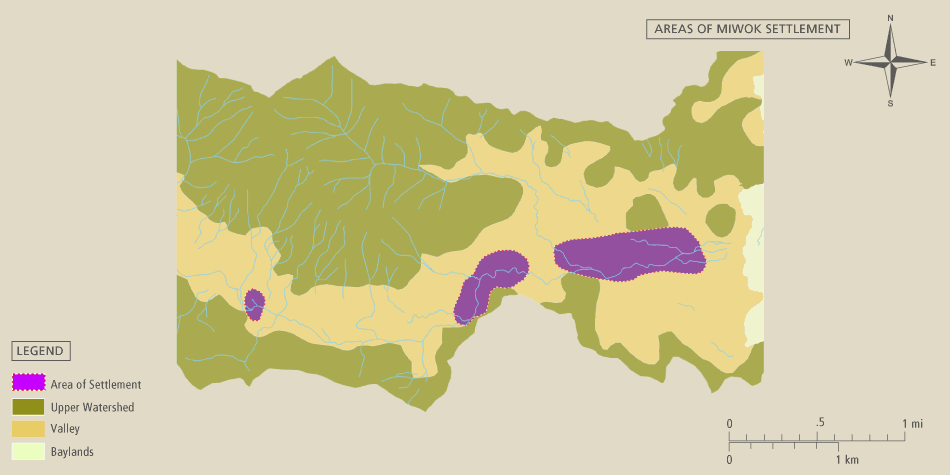
5 Indigenous Management and Practices

Known archeological sites in the watershed (Nelson 1909; Slaymaker 1977) provide evidence of Miwok settlement and material culture.
Map created by the San Francisco Estuary Institute, 2008.
Indigenous Management and Land Practices
The local population of Coast Miwok managed and utilized every part of Miller Creek Watershed. Archeologists have studied some of the locations where they settled. The Miwok obtained acorns from oaks, salmon from the creek, pinole1 from the grasslands, shellfish and fowl from the marsh, and larger game from the savannas, forests and chaparral. Dozens of species were used and managed for medicines, food, clothing, ceremonial regalia, tools, and construction materials.
Fire was expertly used as a land management tool. Oak groves and savannas, grassland and chaparral were carefully burned to increase grain production, clear underbrush for better hunting, suppress plant pests and diseases, flush game, nurture particular plants used as food or construction materials, and to protect forests, savannas, and villages from destructive wildfires.
Shift to a European Management Regime
Native land management ended abruptly in the early 19th century, as the Coast Miwok were removed from their villages and often died as a result of Euro-American contact. After the cessation of native management, the plant and animal communities in the watershed struggled to establish a new balance. Without the regular application of native management techniques such as controlled fires, selective harvesting, and culling of wildlife herds, ecosystem dynamics became more chaotic and unpredictable. The introduction of invasive Mediterranean species also changed the balance of the ecosystems. With little or no knowledge of the influences that shaped these working landscapes for thousands of years, the new settlers employed land management practices that had been developed in Europe. A new era of "trial and error" land management began.
1 Pinole: seeds from native grasses used for grain.
